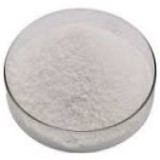 |
Potassium Bitartrate or Cream of Tartar USP FCC Food Grade Potassium Hydrogen Tartrate BP Ph Eur Supplier Exporter Manufacturers' Representative |
Email: info@ammol.org |
Call Toll Free +1-855-552-6665 |
Potassium Bitartrate or Cream of Tartar
CAS Number: 868-14-4
Molecular Formula: C4H5KO6
Molecular Weight: 188.18

Potassium Hydrogen Tartrate or Potassium Bitartrate or Cream of Tartar
Potassium Bitartrate USP Grade Specifications
Potassium Bitartrate or Cream of Tartar
C4H5KO6 188.18
Butanedioic acid 2,3-dihydroxy-, [R-(R*,R*)]-, monopotassium salt.
Potassium hydrogen tartrate CAS 868-14-4
Potassium Bitartrate, dried at 105 for 3 hours, contains not less than 99.0 percent and not more than 101.0 percent of C4H5KO6.
Identification:
A: Ignite it: it leaves a residue that imparts a reddish purple color to a non-luminous flame.
B: A saturated solution of Potassium Bitartrate yields a yellowish orange precipitate with sodium cobalt nitrite TS.
C: A solution (1 in 10 of Potassium Bitartrate) responds to the tests for Tartrate.
Insoluble matter: Mix 500 mg of it with 3 mL of 6 N ammonium hydroxide: no un-dissolved residue remains.
Limit of ammonia:
Sodium hypochlorite solution: Use a commercially available solution that contains between 4.0% and 6.0% of sodium hypochlorite.
Oxidizing solution: [NOTE: Prepare on the day of use.] Prepare a mixture of alkaline sodium citrate TS and Sodium hypochlorite solution (4:1).
Diluted sodium nitroferricyanide solution: Prepare a mixture of water and sodium nitroferricyanide TS (10:1).
Standard solution: Transfer 300 mg of ammonium chloride, previously dried over silica gel for 4 hours, to a 1-L volumetric flask, and dilute with water to volume. This solution contains 100 =g of ammonia per mL. Dilute this solution quantitatively, and stepwise if necessary, with water to obtain a solution having a concentration of 0.25 =g of ammonia per mL.
Test solution: Transfer 250 mg of Potassium Bitartrate to a 100-mL volumetric flask, and dissolve in and dilute with water to volume. Heat gently to facilitate the dissolution.
Procedure: [NOTE: Carefully follow the order of addition stated below.] Separately transfer 6.0 mL each of the Standard solution and the Test solution to two color-comparison tubes. To each tube add 0.4 mL of phenol TS, 0.4 mL of Diluted sodium nitroferricyanide solution, and 1.0 mL of Oxidizing solution. Dilute with water to 10 mL, mix, and allow to stand for 1 hour: the color of the Test solution is not darker than the color of the Standard solution (0.01%).
Heavy metals: the limit is 0.002%.
Potassium Hydrogen Tartrate BP Ph Eur Grade Specifications
Cream of Tartar
C4H5KO6 --- 188.2 --- CAS 868-14-4
Action and use: Excipient.
DEFINITION
Potassium hydrogen (2R,3R)-2,3-dihydroxybutane-1,4-dioate.
Content: 99.5 per cent to 100.5 per cent (dried substance).
CHARACTERS
Appearance: White or almost white, crystalline powder or colourless crystals.
Solubility: Slightly soluble in water, practically insoluble in ethanol (96 per cent). It dissolves in dilute solutions of mineral acids and alkali hydroxides.
IDENTIFICATION
A. Specific optical rotation.
B. Suspend 0.5 g in 50 mL of waterand boil until dissolution is complete. Allow to cool (solution A). To 5 mL of solution A, add 0.1 mL of methyl red solution. The solution is red.
C. Solution A gives reaction of tartrates
D. Solution A gives reaction (b) of potassium.
TESTS
Specific optical rotation: + 8.0 to + 9.2 (dried substance).
Oxalic acid: Maximum 500 ppm.
Chlorides: Maximum 500 ppm.
Sulfates: Maximum 500 ppm.
Barium: Suspend 0.50 g in a mixture of 1.5 mL of dilute hydrochloric acid and 8.5 mL of water. Heat until dissolution is complete. Allow it to cool. Add 1 mL of dilute sulfuric acid. The solution remains clear on standing for 15 min.
Loss on drying: Maximum 0.5 per cent, determined on 1.000 g by drying in an oven at 105C.
Potassium Acid Tartrate FCC Food Grade Specifications
Potassium Bitartrate Cream of Tartar
KOOCCH(OH)CH(OH)COOH
C4H5KO6 Formula weight 188.18
INS: 336 CAS 868-14-4
DESCRIPTION
Potassium Acid Tartrate occurs as colorless or slightly opaque crystals, or as a white, crystalline powder. It is a salt of L(+)- tartaric acid. One gram dissolves in 165 mL of water at 25°, in 16 mL of boiling water, and in 8820 mL of alcohol. A saturated solution is acid to litmus.
Function: Acidifier; buffer.
REQUIREMENTS
Identification:
A. When sufficiently heated, a sample chars and emits flammable vapors having an odor resembling that of burning sugar. At a higher temperature and with free access to air, the heat consumes the carbon of the black residue, and a white, fused mass of potassium carbonate remains that imparts a red-purple color to a non-luminous flame.
B. Mix a saturated solution of sample with sodium cobalt nitrite TS. A yellow-orange precipitate forms.
C. Neutralize a saturated solution of sample with 1 N sodium hydroxide in a test tube, add silver nitrate TS, then just sufficient 6 N ammonium hydroxide to dissolve the white precipitate, and boil the solution. A mirror forms on the inner surface of the test tube from the silver deposited there.
Assay: Not less than 99.0% and not more than 101.0% of C4H5KO6 after drying.
Ammonia: Passes test.
Insoluble Matter: Passes test.
Lead: Not more than 2 mg/kg.
Please visit SDS Safety Data Sheet of Potassium Bitartrate or Cream of Tartar Suppliers.
American Molecules, also known as ammol.org is a distributor, supplier and manufacturers' representative of all types of Pharmaceuticals, Functional Ingredients, Excipients and Specialty Chemicals in Texas USA. Our principals manufacture supply and export USP NF BP, Ph Eur, etc grades of chemicals pure and reagent grade, mineral fortifiers, FCC food grade. Tailor made particle size and customized specifications are offered. The principal's facility is having one or more of the certifications like FDA approval and GLP, cGMP, ISO9001, ISO14001, ISO/IEC 17025, ISO22000, FSSC 22000, ISO45001, FSSAI, Kosher, HALAL, COPP, WHO-GMP certified and Written Confirmation (WC) for export to Europe is available. The manufacturers suppliers and exporters observe WHO Good Manufacturing Practices and Good Laboratory Practices.





Suppliers and Manufacturers' Representative:

9910 Bent Oak Dr
Houston, TX 77040, USA
Call Toll Free: 1-855-55-AMMOL 1-855-552-6665
Email: info@ammol.org